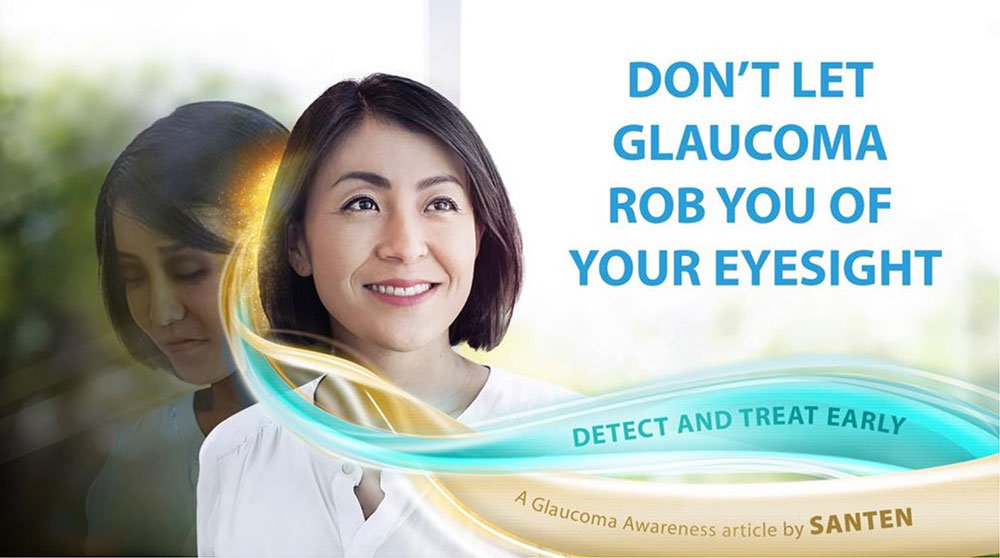
The eye is one of life’s treasures. It is our organ for vision.
The retina, located at the back of our eye, plays a key role in giving us our gift of sight. This is where information on shape, colour and pattern is picked up and carried to the brain via the optic nerve.
We must, therefore, be vigilant of eye conditions that may damage our optic nerve, impact our vision and eventually lead to sight loss. One such chronic condition is glaucoma.
WHAT IS GLAUCOMA?
Glaucoma occurs when the optic nerve connecting the eye to the brain is damaged. It often develops because of fluid building up in the in the front part of the eye, resulting in raised intraocular pressure (IOP).
While anyone can develop glaucoma, it is more common in people over 60 years old and can result in vision loss and eventual blindness, if not treated.
With no known cure for glaucoma, regular eye examinations are therefore, very important for early detection and proper treatment to slow or stop its progression.
WHAT ARE SOME SIGNS AND SYMPTOMS?
Symptoms can start so slowly that you may not even notice it.
Thus, it is good to promptly consult your ophthalmologist if you have any tell-tale signs.
These include loss of peripheral vision, having tunnel vision, a blurred or hazy vision, experience of halos or glare especially at night and having some eye pain and discomfort.
HOW TO TREAT GLAUCOMA?
The goal in glaucoma treatment is to control IOP, the main risk factor for the development and progression of glaucoma.
The first and most common treatment option is always noninvasive through medications or eye drops.
In Malaysia, a group of medicines called prostaglandin analogues (PGAs) are a common treatment choice because they are effective in lowering pressure in the eye and are easy to use with daily application.
However, it is reported that about 50% of users of PGA eye drops may experience visible changes that occur around the eye including the eyelids, known as prostaglandin-associated periorbitopathy syndrome (PAPS), after over one month.
Common signs of PAPS are sunken eyes or deepening of the upper eyelid sulcus (also known as DUES), excessive eyelash growth, droopy upper eyelid, darkening of skin around the eyes or eyelids, flattening of the lower eyelid bags and/or fat loss around the eye, and eyelids pressing firmly against the eye.
These can adversely affect the quality of life of glaucoma patients causing them to feel gloomy, avoid looking in the mirror, lack confidence to socialise, and interfere with their work.
Beyond these cosmetic changes, PAPS can also have negative impact on treatment outcomes, including unreliable eye pressure measurements and added difficulty and poor outcomes related to glaucoma surgery in the future.
Some patients are known to discontinue their treatment because of these side effects and this can hamper the overall management of their condition.
Nonetheless, the good news is that with advancements in ophthalmology, there are other class of medicines now available to fulfil the unmet needs among glaucoma patients. These newer options can help them be free from PAPS so they can continue treatment without compromising their quality of life.
BE PROACTIVE FOR BETTER VISION
Detect your condition early for better outcomes and consult your ophthalmologist to learn of a suitable eye drop for you.
Remember, regular and frequent eye examinations are essential to monitor the progression of glaucoma and to adjust treatment as needed.
Prevent the risk of vision loss and continue to enjoy the beautiful wonders of creation.





